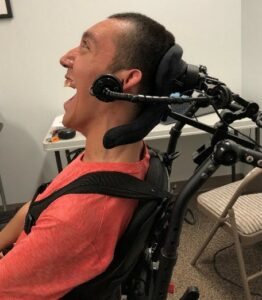Don’t Jump to a Solution Without Knowing What the Problem is! Part 2: the ATP/Supplier
Michelle L. Lange, OTR/L, ABDA, ATP/SMS
In Part 1 of this Blog series, we discussed the Client and Caregivers and how they can help identify the Problem that needs a Solution. Nobody knows the Problem like the Client and Caregivers. Part 2 presents the Supplier and their role on the team in determining a Solution.
The Supplier
The ATP/Supplier is very knowledgeable about CRT equipment and the reimbursement process.
Complex Rehabilitation Technology (CRT) Suppliers play a critical role on the Seating and Mobility team. The Supplier will typically hold an Assistive Technology Professional (ATP) certification from RESNA and so is sometimes referred to as the ‘ATP,’ although Clinicians may hold this certification, as well. The Supplier is very knowledgeable about CRT equipment and the reimbursement process. The Supplier will gather and complete the required paperwork to submit to the funding source. Once funding approval is obtained, the Supplier will order, assemble, and fit the recommended equipment to the Client.
As a team member, the Supplier must take the time to identify Client and Caregivers goals, determine a problem-list, and then brainstorm appropriate solutions with the team. This will ensure the best overall outcomes.
An Example
During an evaluation, I thought I had come up with a great solution to a problem. A young child I was working with was outgrowing the seating on her adaptive stroller and I thought we could just order larger seating, as the family really liked this mobility base. After all, the base sure looked big. The Supplier, really knowing the equipment, let me know that the stroller frame could only accommodate 1 more inch of seat depth. Oh. So, new discussion, new plan, and recommendations for a new frame and seating with adequate growth. It takes a team.
Jumping to a Solution

That's a lot of force!
It is so easy to jump to a Solution when it is late in the day, you can’t remember the last time you ate, and you are running late. A colleague of mine, Sharon Sutherland, was speaking to an evaluation team. A client they were working with keep breaking his head support mounting hardware. To address the Problem, the team came up with a Solution – increase the durability of the mounting hardware. After doubling up on the mounting hardware, the client was unable to break the equipment. However, he did fracture 2 of the vertebrae in his neck. The Solution addressed the equipment breakage Problem, but this wasn’t the whole picture. The Problem was actually the force this client was able to exert. One result was broken equipment. By switching to Dynamic Head Support Hardware, the client’s forces were absorbed, the hardware didn’t break, and, most importantly, the client was protected from further injury.
Look for the final Blog in this series! Part 3 will discuss the role of the Clinician. Together, we can identify the Problem to find the best Solution.
